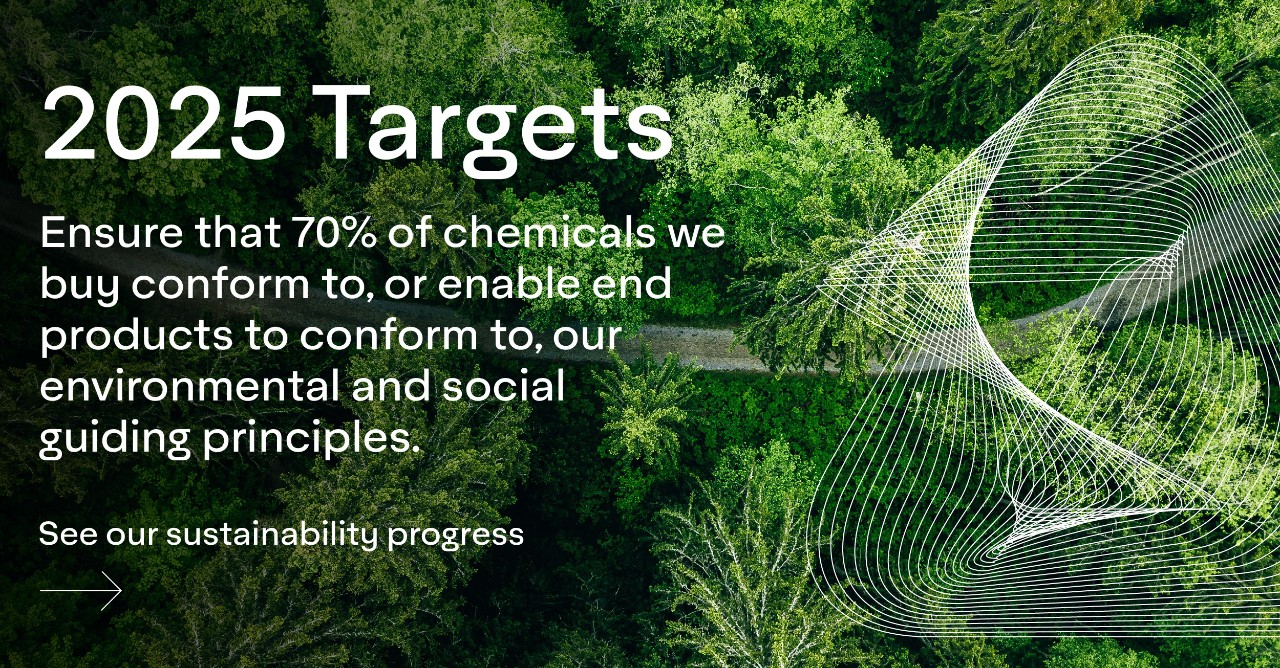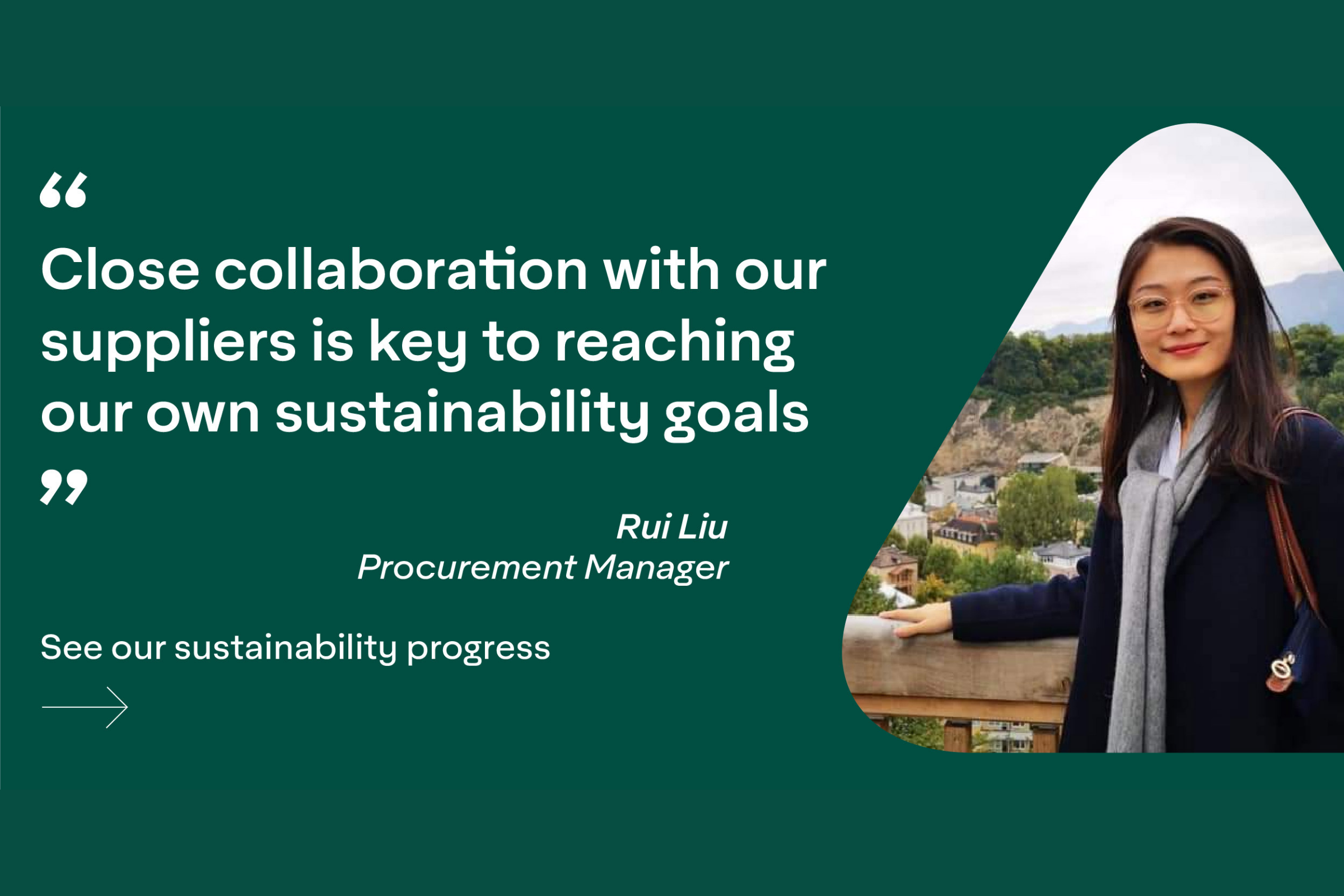
Sustainable products start with sourcing sustainably.

"Collaborating with our suppliers is essential in helping us to deliver our vision for a sustainable graphics industry. Through our programs and partnerships, we are connecting with materials providers that will enable us to achieve our ambitious environmental targets."
What does sustainable sourcing mean?
Sustainable sourcing means that our supply chain cares for people and the environment. It ensures that environmental, social and ethical factors are all integrated in the selection process of suppliers.
How does Avery Dennison choose the right suppliers to work with?
At Avery Dennison we increasingly source materials that have a reduced environmental impact, and fewer associated greenhouse gas emissions. We also procure materials that meet our standards for safety and for human and labor rights.
Our Sustainable Procurement Program ensures we work with suppliers who align with our ethical and environmental standards. This collaborative evaluation platform provides our suppliers with sustainability ratings and performance improvement tools. Each year with our partner, EcoVadis, we review suppliers that represent more than 80% of our direct spend on materials for Avery Dennison LGM. EcoVadis audits a company’s environmental practices, fair business practices, working conditions, and supply chain.
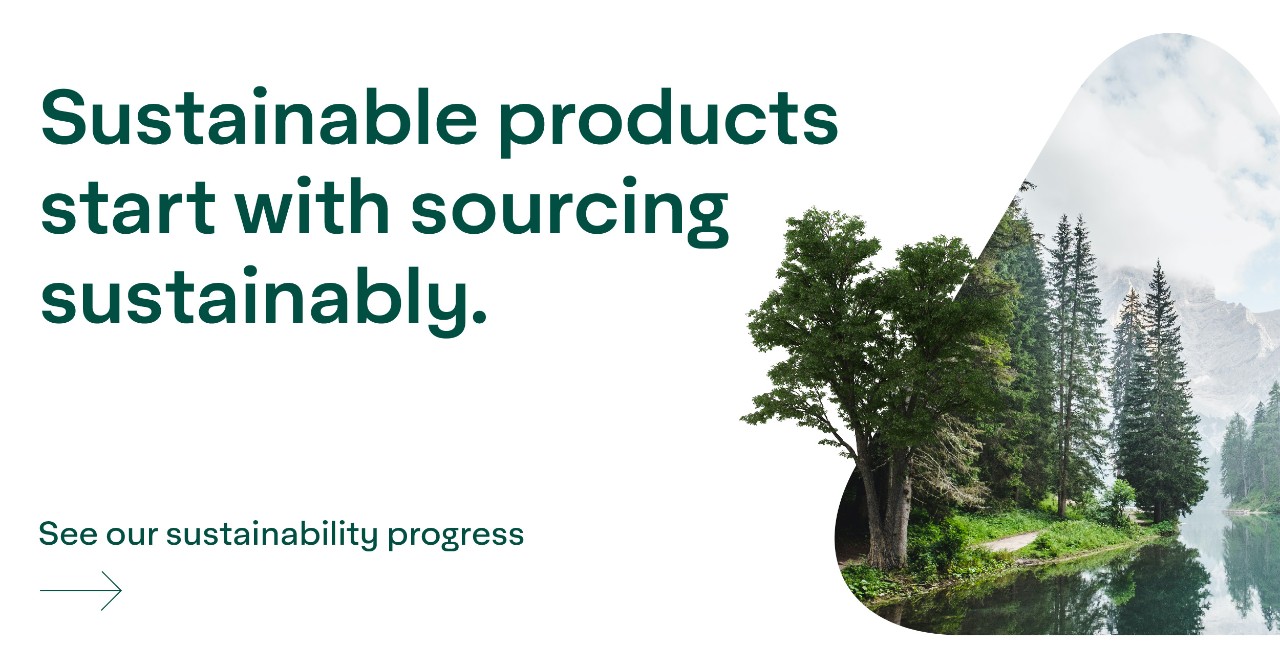
What targets has Avery Dennison set with respect to sustainable sourcing?
As a company we have set some of the boldest goals in our industry to advance the environmental and social sustainability of our supply chain:
2025 Targets
- Source 100% certified paper, of which at least 70% is Forest Stewardship Council®-certified
- Ensure that 70% of films we buy conform to, or enable end products to conform to, our environmental and social guiding principles
- Ensure that 70% of chemicals we buy conform to, or enable end products to conform to, our environmental and social guiding principles
2030 Targets
- Source 100% of paper fiber from certified sources focused on a deforestation-free future
- Engage 80% of our spend of LGM’s direct suppliers on their environmental and social policies including water, human rights, fair business, forestry, etc.
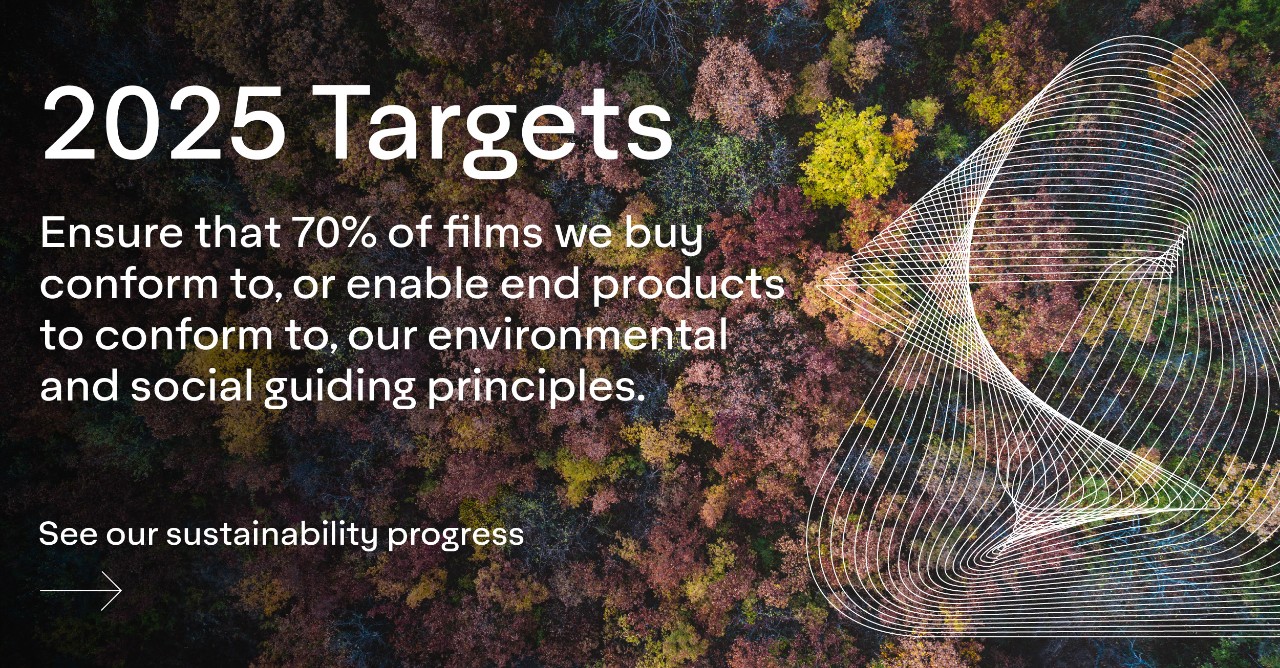
How is Avery Dennison reducing greenhouse gas (GHG) emissions in its supply chain?
We follow the GHG Protocol Corporate Standard that classifies a company’s GHG emissions into three ‘scopes’. Scope 1 emissions are from our own operations. Our Scope 2 emissions are from the purchased energy we consume. Scope 3 emissions are all indirect emissions from our suppliers in the value chain.
In 2018, we completed our scope 3 GHG emissions inventory and determined that upstream goods and services is our largest category of scope 3 emissions, due to the volumes of paper, films, and chemicals we purchase. Accordingly, we set a 2030 sustainability goal to reduce our scope 3 emissions by 30% and are partnering with CDP Supply Chain and EcoVadis to collect energy and emissions-related data from our key suppliers in order to partner with them to achieve our target.
To further understand opportunities for reducing our carbon footprint, we use a proprietary environmental life cycle assessment (LCA) tool we developed for the materials we source.
Also, we are working on creating a tool that will enable us to capture our holistic carbon picture which will provide specific carbon emissions information for our products based on their region of production, raw material sourcing, and different end-of-life scenarios.
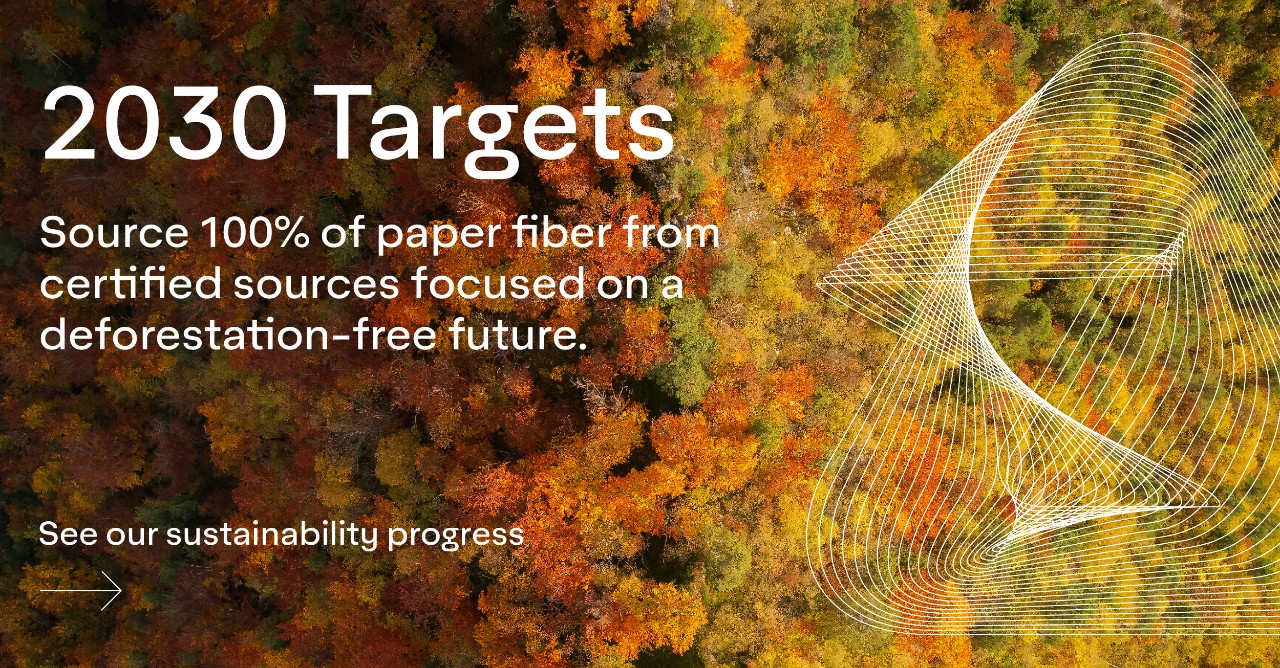
What are some examples of sustainable sourcing in Mactac Graphics Solutions?
Two examples are reducing hazardous chemicals, and sourcing renewable paper suppliers.
To make our products safer and more sustainable we are committed to eliminating the use of hazardous chemicals. For example, we have already eliminated lead chromates from products manufactured in the European Union, and we aim to eliminate them from all products globally by 2025. All our products are compliant with REACH and therefore contribute to the improvement of human health and the environment. Our EcoDesign methodology means we can scrutinize our chemical products more strictly than is required by law (e.g. REACH) from the very beginning of the concept and design stage of our product innovation processes.
Secondly, the majority of our paper based materials including release liners, paper facestocks and packaging components are sourced from FSC® certified suppliers.
We take great care in designing our packaging components so as to minimize their environmental footprint. The majority of our plastic core stoppers are made with recycled plastic granulate and all paper based packaging elements of our self-adhesive graphics products are recyclable, where appropriate paper waste recycling bins are available.
Close collaboration with our suppliers to support their continuous improvement is key to reaching our own sustainability goals. For more information on our commitment to Sustainability, you can visit our website and check out our sustainability brochure.
